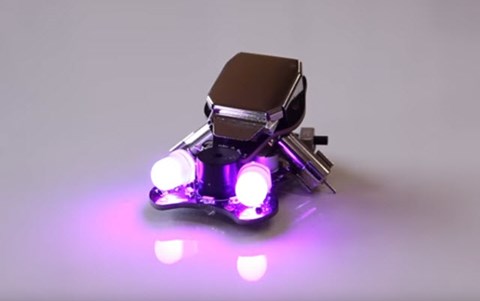Wink - Learn to code with this entry level robot.
Wink was designed as a learning platform for people who are totally new to writing computer code. Wink's motors are fast and can be independently driven forward or backward and at any variable speed. Wink's eyes can be programmed to any color. Three light sensors on the top side enable light seeking and behaviors activated by lights. An infrared barrier headlight can be used together with the ambient light sensors to detect obstacles several inches in front of the robot. An array of four bottom sensors allow for high speed line following as well as edge detection.
Additional details
| Year band(s) | 7-8, 9-10 |
|---|---|
| Content type | Tools for learning |
| Format | Web page |
| Core and overarching concepts | Implementation (programming) |
| Australian Curriculum Digital Technologies code(s) |
AC9TDI8P09
Implement, modify and debug programs involving control structures and functions in a general-purpose programming language
AC9TDI10P09
Implement, modify and debug modular programs, applying selected algorithms and data structures, including in an object-oriented programming language |
| Technologies & Programming Languages | Robotics and drones |
| Keywords | General purpose programming, Programming, Robots, Robotics, Sensors, Computational thinking, STEM, STEAM, Arduino |
| Integrated, cross-curriculum, special needs | Design and Technologies |
| Organisation | Plum Geek |
| Copyright | 2015-2016 Plum Geek, LLC. May be subject to Copyright Act statutory licence. |
Related resources
-

Python
Python is a free programming language. This web page includes resources for learning to program with Python.
-

Unity for Education
Unity is a popular Game Engine. This site offers 'real-world' tools to students, but with a low barrier to entry - all coding is via C# and 'visual' coding plugins are also available. Paid subscription required. Lesson plans and courses are also available.
-

repl.it
Use this simple online compiler, IDE, interpreter and interactive environment to explore all the common programming languages such as Python and Java script.
-

BBC micro:bit MicroPython documentation
The BBC micro:bit is a small computing device. One of the languages it understands is the popular Python programming language. The version of Python that runs on the BBC micro:bit is called MicroPython. This documentation includes lessons for teachers and API documentation for developers.
